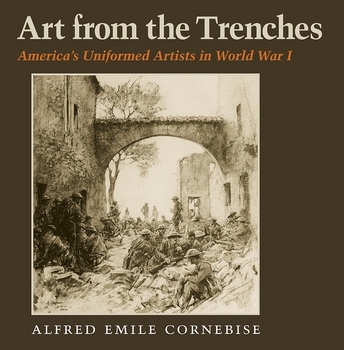
Название: Art from the Trenches: America's Uniformed Artists in World War I
Автор(ы): Alfred Emile Cornebise
Издательство: Texas A&M University Press; Reprint edition
Серия: Williams-Ford Texas A&M University Military History Series (Book 20)
Год: 2015
ISBN-13: 978-1623492021
Страниц: 174
Язык: English
Формат: PDF True
Размер: 160 MB
Since ancient times, wars have inspired artists and their patrons to commemorate victories. When the United States finally entered World War I, American artists and illustrators were commissioned to paint and draw it. These artists’ commissions, however, were as captains for their patron: the U.S. Army. The eight men—William J. Aylward, Walter J. Duncan, Harvey T. Dunn, George M. Harding, Wallace Morgan, Ernest C. Peixotto, J. Andre Smith, and Harry E. Townsent—arrived in France early in 1918 with the American Expeditionary forces (AEF). Alfred Emile Cornebise presents here the first comprehensive account of the U.S. Army art program in World War I. The AEF artists saw their role as one of preserving images of the entire aspect of American involvement in a way that photography could not. Unsure of what to do with these official artists, AEF leadership in France issues passes that allowed them relative freedom to move about, sketching as they went and finding supplies and lodgings where they could. But the bureaucratic confusion over the artists’ mission soon created controversy in Washington. The army brass there was dismayed at the slow trickle of art coming in and at some of the bucolic, behind-the-lines scenes, which held little promise as dramatic magazine illustrations or propaganda. The Armistice came only a matter of months after the American Artists arrived in France, and they marched into the Rhineland with the American occupation forces, sketching along the way. Soon returning to France the artists went into separate studios to finish their works, but the army hurriedly discharged them and they were civilian artists once more. The author conducted research for this book in the World War I army records in the National Archives, as well as the collections of the Smithsonian Institution, and others throughout the country. The sixty-six black-and-white pictures reproduced here are some of the approximately five hundred pieces of official AEF combat art, which shortly after the war were turned over to the Smithsonian Institution, where most of them remain.








